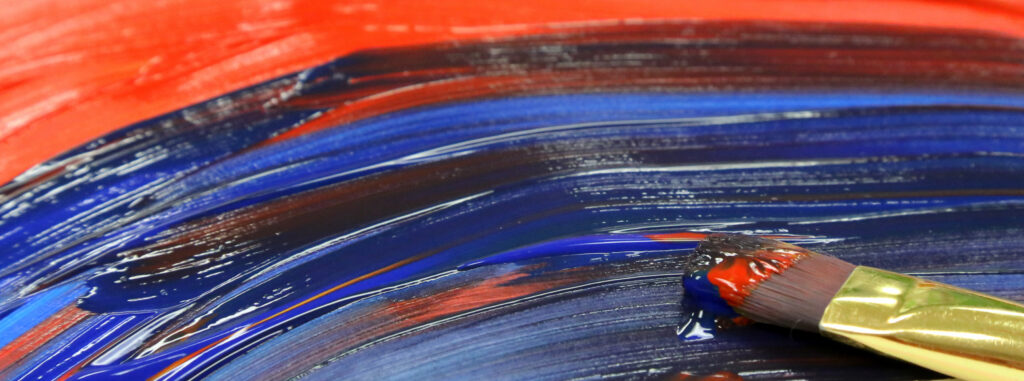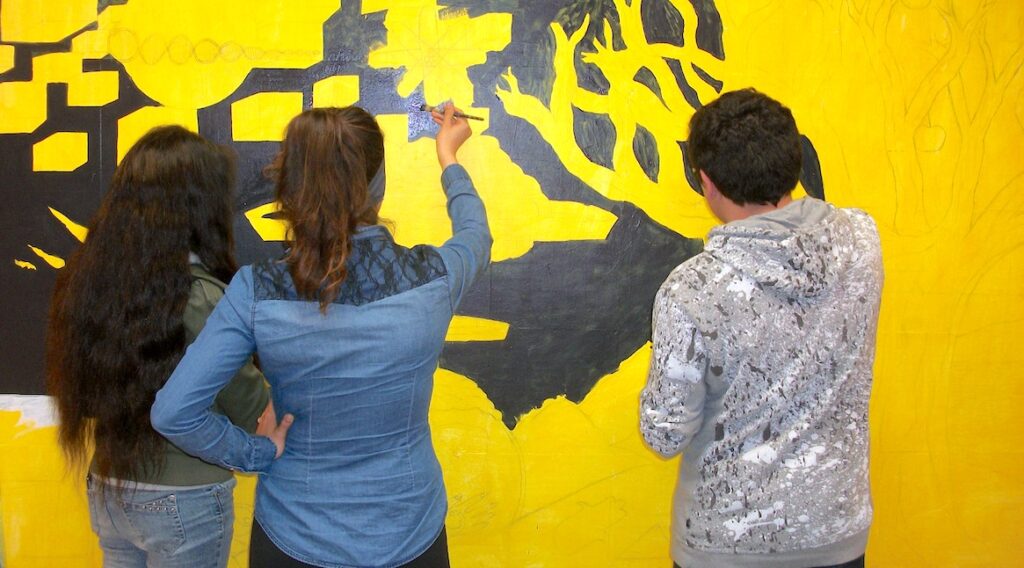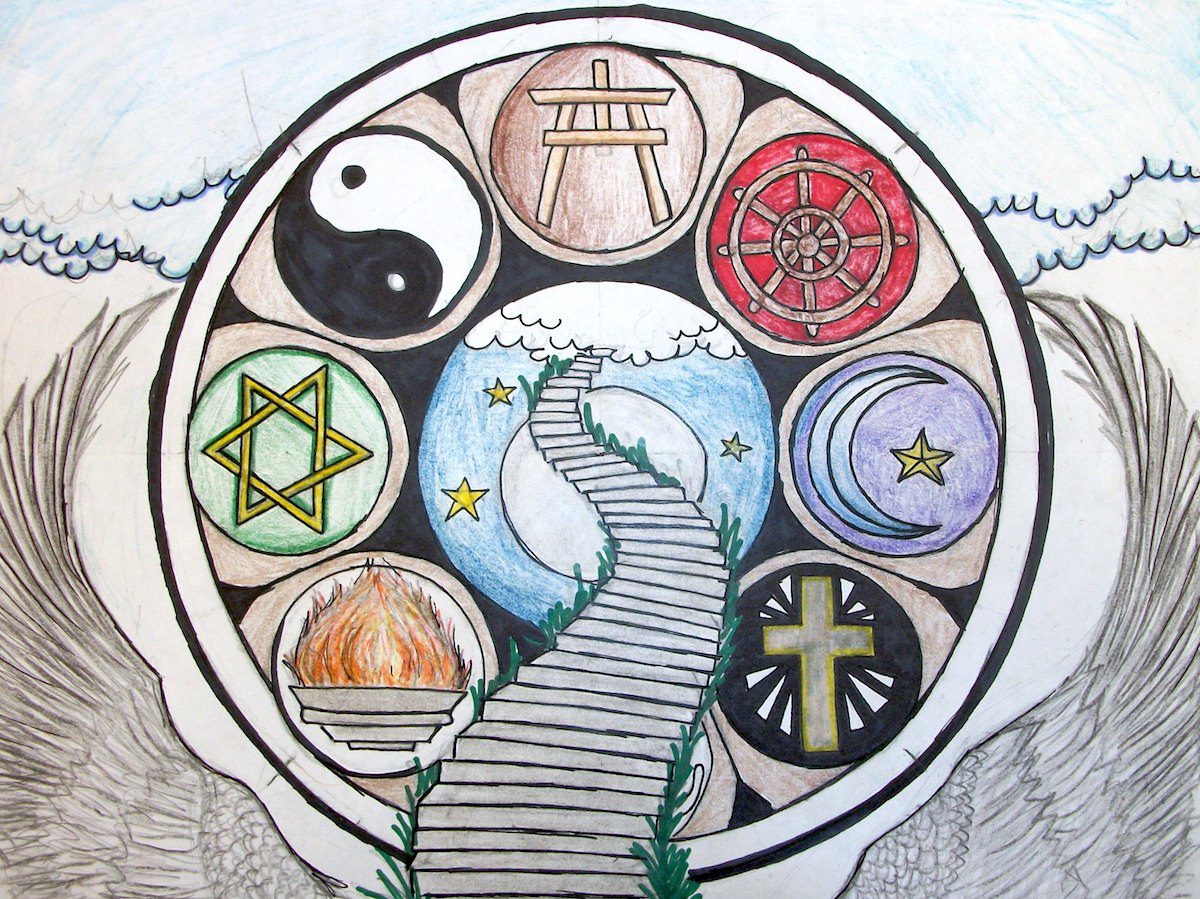The more holistic an art education program is, the more powerful it can be. On top of leading youth in artistic quests, we strive to cultivate excitement, relevance, rigor, choice, critical thinking, work ethic, and empowerment in our students. Is there one art education philosophy that stimulates every aspect of the academic art spectrum? The quick answer is no.
Therefore, using a blended model makes our pedagogy as dynamic as possible.

What is a Blended Model?
Imagine each model of education as a different color. You may have a mimetic model that focuses on students following the teacher, a formalist method that focuses on elements and principles, or an expressive model where students are encouraged to dive deep into their ideas and feelings.
Many times, teachers use just one or two main “colors” in their classrooms. They may say things like, “I care much more about the process than the product,” or “The most important thing in my room is that students know the elements and principles by the time they graduate.”
While it can be great to have a clear educational philosophy and focus, opening yourself up to other models can provide a more holistic experience for your students because no one model is sufficient in today’s interconnected, global society. Using a blended approach means you can choose the best elements from different philosophies to increase student benefits.
Creating your own blended educational paradigm is much like actual painting; rarely is a color used straight out of the tube.
What Can a Blended Model Look Like?
Each educational philosophy has something unique and valuable to offer students. For example, you may use a follow-the-teacher approach during the first few days of a lesson to help students with lower skills build skills and confidence. Then, you may switch to a formalist approach to help students develop a toolkit of elements and principles they can use to create more powerful work.
Pragmatism focuses on giving students real-world challenges, so they learn through experience and work well when developing final projects. This approach leads to new levels of collaboration, social examination, and creating art for specific purposes. Students can analyze the problems of their communities and decide how the creative process can attempt to address and change issues at hand.
Using different models can also help with differentiation. For example, you might combine visual culture studies with more traditional approaches. Examining subjects from popular and visual culture can address the needs of multiple ranges of students and skill levels. Or, as mentioned earlier, you could pick and choose different models at different times during a unit or curriculum plan based on your students’ needs.
Finding the Right Balance
A holistic approach to art education includes the strongest components of all models. However, it can be challenging to know which aspects of each philosophy to adopt. Address this problem by answering the following question. Am I serving the needs of art students or the needs of the art establishment?
If the outcomes for a particular lesson or assignment are mostly benefiting museum culture, what use is it to students who do not value or relate to those exclusive artistic venues? Instead, we can promote aspects of museum culture (through criticism or aesthetic response) by using visual culture. For example, we do not need to analyze centuries-old European paintings to get students to talk about art. We can blend the structure of Discipline-Based Art Education with the relevance and engagement that naturally accompanies Visual Culture Art Education.

Including Both Product AND Process
It is far too common in our society to polarize everything. Either you practice TAB or DBAE. Either you value product-based outcomes or process-based outcomes. Instead, students and art programs alike need to embrace the strengths of multiple approaches.
Process-based thinking is essential, empowering, and educational. However, if we do not have product-based thinking to accompany it, then are we training artists or thinkers? If we only emphasize the artistic thinking that went into the process, then what are we teaching students about perseverance and completing their best work? Without basing some value in the product, how are we preparing students for occupations in art-related fields?
How can we promote and advocate for an arts program without some emphasis on the art that is created? We are all aware of the nature of attacks on funding and opportunities in art education. If we are not stimulating the cognitive process to produce murals, concerts, performances, and exhibitions, what do we use to advocate for the necessity of our discipline? We must take advantage of the strengths of all paradigms to achieve the most holistic, powerful program possible.

Final Thoughts
“We teach students, not subjects” is the only quote I remember from my teaching credential program. It is our job to use the arts to serve our students and their diverse needs. Some students want to pursue art and will need to enhance technical abilities. Others will want to be entrepreneurs and will benefit from grappling with the cognitive challenges of the creative process. Some students need an outlet and a purpose for being that studying visual culture can provide them.
Nobody is saying art education is easy. It surely is not. At the same time, we have the most dynamic, transformative, relevant subject and lifelong study to provide our students. Art has the power to bridge disciplines, communicate and express profound content, heal, captivate, motivate, enhance, and expand. As we move forward in this privilege of working with art and youth, let us be bridges rather than islands. Let us strive to learn from each approach and use the best of each construct to further develop our students. A holistic, blended paradigm from process to product will elevate art education to higher levels.
How do you feel about a blended approach to art education?
What do you believe are the strengths of different art education models?
This is my final article as a writer for the Art of Education. It has been such a pleasure and an honor to have been able to share insight, learn from one another, and continue a dialogue on improving art education in general. Thank you to all art educators out there! You are doing incredibly important work, and our students need you. Let us keep working together and learning from one another to best support, invigorate, and transform our students and education. Much love!
Matt Christenson
Magazine articles and podcasts are opinions of professional education contributors and do not necessarily represent the position of the Art of Education University (AOEU) or its academic offerings. Contributors use terms in the way they are most often talked about in the scope of their educational experiences.





